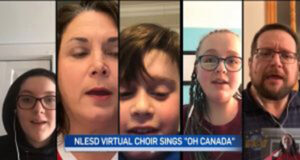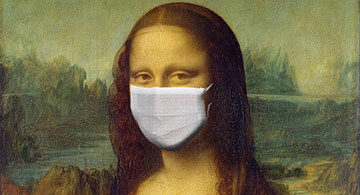 With people confined in their homes during this pandemic, we see more and more evidence of creativity and ingenuity happening in our daily lives. People are finding new ways to stay busy without common forms of entertainment such as shopping malls, social gatherings or gyms. People’s time that would have otherwise been spent in varied activities, is now being spent at home, and most likely on the sofa or bed.
With people confined in their homes during this pandemic, we see more and more evidence of creativity and ingenuity happening in our daily lives. People are finding new ways to stay busy without common forms of entertainment such as shopping malls, social gatherings or gyms. People’s time that would have otherwise been spent in varied activities, is now being spent at home, and most likely on the sofa or bed.
Creativity is not just confined with the arts. There is inventiveness and imagination in sciences, design, sports and cooking. Social media news feeds are inundated with posts of people’s creations, whether they are newbies and veterans in these activities: crafts, sewing, knitting, crocheting; performances – singing, playing musical instruments, story telling, video creation (esp. TikTok); podcasts; photography; learning languages; the creative use of 3D printers for PPEs. People are also finding creative ways to celebrate life milestones, i.e, birthdays, graduations, weddings.
Working on something that is challenging but can be addressed by one’s skills, people enter a state he called flow. In this state, people are fully absorbed in and focused on the activity, and as a result, they lose track of time. And it is this unlocking of the imagination in reimagining events and activities that provides the amazement factor in this time of the pandemic.
Historically, there are prominent examples of those who found creative inspiration in spending time alone.
Isaac Newton, with schooling at Cambridge University halted, retreated to his family home in Lincolnshire, where, in a remarkable burst of creativity, he laid the groundwork for his theories of gravity and optics, and invented calculus. There is also the notion that William Shakespeare wrote some of his best poems and plays while plague forced a closure of London’s theatres.
Arts has been more accessible too with the numerous online workshops, some for free, others subsidized, and some as fundraisers. Performances and films have been made available online – giving us front row seats to Andrew Lloyd Webber’s musicals, ballets, operas, landmark films and theatre productions from all over the world. You just need to know where to look. And now, there is the much awaited release of Hamilton in the summer.
 Some artists have managed to hold outdoor performances while people stay at home – musicians and singers performing from their balconies or sidewalk, in the rotunda of a housing community, and recently, Keith Urban in a major drive-through concert for first responders. And with most projects being done online, there has also been a noticeable rise of collaborations amongst artists across the globe – first in mind is the Lady Gaga curated tv special Together at Home, in support of the World Health Organization, and Swans for Relief, which featured 32 ballerinas from 22 dance companies from 14 countries, to raise funds for dancers affected by the pandemic all over the world.
Some artists have managed to hold outdoor performances while people stay at home – musicians and singers performing from their balconies or sidewalk, in the rotunda of a housing community, and recently, Keith Urban in a major drive-through concert for first responders. And with most projects being done online, there has also been a noticeable rise of collaborations amongst artists across the globe – first in mind is the Lady Gaga curated tv special Together at Home, in support of the World Health Organization, and Swans for Relief, which featured 32 ballerinas from 22 dance companies from 14 countries, to raise funds for dancers affected by the pandemic all over the world.
Famous museums have offered virtual tours. Many institutions have made educational resources freely available online; IBM made their design courses free, NASA offers many lessons and activities and a Pandemic University has even been established, offering online courses covering a range of topics including feature writing, true crime, non-fiction book proposals, travel writing, personal essays, food writing.
Corporations have also stepped up to support these online activities. Telecom companies facilitated access by removing internet data caps, relaxing long distance rules to facilitate communication, subsidizing internet rates for low income families and for some, providing free service.
 People with a passion for art finally have time to invest in developing their creative side in a more systematic way. While staying abreast of pandemic updates is important, ultimately, a positive mindset and the ability to switch off will help people cope better day-to-day. Art has inadvertently reached a wider audience and range of participants. It has served us well as a means of expression, a coping mechanism, and outlet of pent-up emotions and energies. The hope is that for the long term, access to all these creativity will carry over to sustained support of the arts beyond the days of the pandemic.
People with a passion for art finally have time to invest in developing their creative side in a more systematic way. While staying abreast of pandemic updates is important, ultimately, a positive mindset and the ability to switch off will help people cope better day-to-day. Art has inadvertently reached a wider audience and range of participants. It has served us well as a means of expression, a coping mechanism, and outlet of pent-up emotions and energies. The hope is that for the long term, access to all these creativity will carry over to sustained support of the arts beyond the days of the pandemic.
Side note: It is stinging that in the midst of all these creativity, collaboration and support between artists, media, corporations and in the government, in the Philippines, ABS-CBN, the largest entertainment and media conglomerate, with a little bit more than 11,000 employees, was shut down on May  5, 2020. It is a perplexing turn of events at these times:
5, 2020. It is a perplexing turn of events at these times:
• when media plays a crucial role in disseminating crucial and credible information on Covid-19, and in ensuring that these information reaches the most number of citizens;
• when people are already losing their jobs due to Covid-19 and public health concerns, the last thing needed are job losses due to political wranglings;
• when entertainment is essential for mental health, easing people’s anxiety born out of lockdown and quarantine orders;
• when empathetic conduct from leaders is respected and honoured.
Hopefully, a resolution of this issue is forthcoming.
To comment on this article, go to https://www.philippineartscouncil.com/blog .


